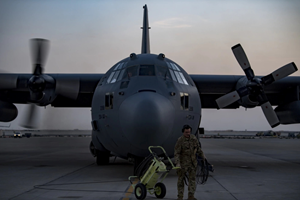Velo3D Qualifies Aluminum Alloy to Support Formula 1 Customers
Aluminum alloy supports Formula 1 customers by enabling the production of parts requiring high thermal conductivity and durability, and is available to print in both 50 and 100 micron layers.
Share
Read Next
Velo3D, a metal additive manufacturing technology provider for mission-critical parts, and PWR Advanced Cooling Technology have partnered to qualify Aheadd CP1, an aluminum alloy developed by Constellium, for use in Sapphire printers.
PWR will use the alloy to manufacture highly efficient, compact and lightweight heat exchangers for Formula 1 along with a variety of other components for their high-performance customers. In addition to the standard 50-micron layer thickness that all Velo3D printers use, Aheadd CP1 is also being qualified to print in 100-micron layers, providing customers with a balance between finished part performance and system throughput.
The Fédération Internationale de l'Automobile (FIA), the governing body over Formula 1 and other global motorsports, recently approved the Aheadd CP1 alloy for use in Formula 1 cars beginning in the 2024 season. This effort was largely driven by PWR — which works with many professional motorsports teams to provide them with finished, tested and ready-to-use heat exchangers — and its customers.
“Our team is committed to listening to customers and enhancing our technology to meet their needs, so when PWR came to us with a challenge of qualifying a new alloy with a first-of-its-kind parameter set, we were thrilled to partner with them on the project,” says Dr. Zachary Detweiler, Velo3D vice president of technology. “Aheadd CP1 is the first alloy qualified in our Augsburg, Germany, European Technology Center. Our American and European teams are both adept at creating scalable solutions for metal AM materials and we encourage companies who need customized material development for their applications to contact us about their specific requirements.”
For more than two decades, PWR has provided its customers in F1, NASCAR, V8 Supercars, Deutsche Tourenwagen Masters and other motorsport categories with quality, high-performance aluminum radiators, intercoolers, oil coolers and other finished parts. It also services customers in the energy, defense and aerospace industries. The company is AS9100D and ISO 14001 certified, ITAR compliant and has secured Nadcap accreditations for its chemical processing and heat-treating services.
“Aheadd CP1 is a fantastic addition to our additive manufacturing services and Velo3D’s unparalleled print capabilities coupled with PWR’s brazed fin technology creates a unique performance differentiator for our customers,” says Mark Booker, PWR technical project manager. “Our goal is to give our racing customers an unfair advantage on the track and we look forward to seeing these teams win using new parts manufactured by PWR.”
Aheadd CP1 is an aluminum, zirconium, iron alloy that is specially designed for laser powder bed fusion printers like Velo3D’s Sapphire family of printers. It is thermally stable up to 300°C, provides excellent corrosion resistance, is highly isotropic, and printed parts have excellent surface finish and stable microstructures.
- Read Velo3D founder’s views on the three biggest challenges of 3D printing metal parts. Velo3D CEO and founder Benny Buller offers this perspective on cost, qualification and ease of development as they apply to the progress of AM adoption in the future.
- Learn about the Velo3D partnership with PhysicsX to provide engineers with AI simulation tooling. The collaboration gives Velo3D customers access to AI-enabled physics simulation and optimization capabilities, and gives PhysicsX customers increased manufacturing flexibility to produce their most advanced concepts.
Related Content
Quadrus: Powder Management Tactics for Tungsten Rhenium and Other AM Alloys
The expert in additive manufacturing of high-value parts for the Defense Department often must change from one exotic material to another in its powder bed machines. Cleaning is a core competency. Here are lessons of this company’s system for working with an ever-changing mix of 3D printed alloys.
Read MoreAdditive Manufacturing for Defense: Targeting Qualification
Targeting qualification in additive manufacturing for the defense industry means ensuring repeatability as well as reliability as there is much at stake, including human lives. Certain requirements therefore must be met by weapons systems used by the defense industry.
Read MoreThe Cold Spray Solution to the Casting, Forging Supply Chains
Startup HAMR Industries performs additive manufacturing work at Neighborhood 91 that provides an alternative to traditional casting and forging. Success so far has led to redefining the limits of its additive equipment.
Read MoreBeehive Industries Is Going Big on Small-Scale Engines Made Through Additive Manufacturing
Backed by decades of experience in both aviation and additive, the company is now laser-focused on a single goal: developing, proving and scaling production of engines providing 5,000 lbs of thrust or less.
Read MoreRead Next
Alquist 3D Looks Toward a Carbon-Sequestering Future with 3D Printed Infrastructure
The Colorado startup aims to reduce the carbon footprint of new buildings, homes and city infrastructure with robotic 3D printing and a specialized geopolymer material.
Read MoreProfilometry-Based Indentation Plastometry (PIP) as an Alternative to Standard Tensile Testing
UK-based Plastometrex offers a benchtop testing device utilizing PIP to quickly and easily analyze the yield strength, tensile strength and uniform elongation of samples and even printed parts. The solution is particularly useful for additive manufacturing.
Read MoreBike Manufacturer Uses Additive Manufacturing to Create Lighter, More Complex, Customized Parts
Titanium bike frame manufacturer Hanglun Technology mixes precision casting with 3D printing to create bikes that offer increased speed and reduced turbulence during long-distance rides, offering a smoother, faster and more efficient cycling experience.
Read More





















